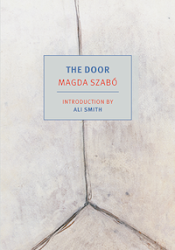Szabó‘s novel The Door made a strong impression on me so I leaped at the chance to read this newly translated book, also set in Hungary. Originally published in 1970, it is the story of 15-year-old Gina who in 1943 is exiled from Budapest by her beloved father, sent to boarding school near Hungary’s eastern border.
Gina is bewildered and furious at being sent away from her father and her social life in the city, which ranges from her friends at school to the more sophisticated people she encounters at the home of her aunt, especially a young lieutenant. The General’s sister may be flighty, but she is Gina’s only other relative. Yet Auntie Mimó is not allowed to know where Gina is going. No one is.
Headstrong, a little spoiled, Gina rebels, finding creative ways to break the rules at the strict academy. When her clothing and few possessions are taken from her, she finds a way to secret a few. She mocks the games and traditions of her fifth year class and later leads them in a series of pranks.
She can only talk to her father by phone once a week in the presence of the humorless Director and the Deaconess; Gina’s forbidden to complain to him. Only later does she come to understand his motives in hiding her away. The war is not going well for the Axis countries and there are fears that Germany will occupy its supposed ally. Thus, this book complements my recent nonfiction reading about WWII.
While having many characteristics of a traditional coming-of-age story, and echoes of books like Jane Eyre, Gina’s story is unusually perceptive and complex. My book club read this, as we had The Door, and we discussed the significance of the title. Abigail is the name of a statue of a woman holding a vase in the school’s garden. The girls believe that the statue comes alive to help them, so when they are in trouble they leave a note in the vase. This legend lends a magical touch to the story.
We wondered why this statue, significant as it is in the story, should be the title. I believe it’s for the same reason the author includes several flash-forwards, brief messages from a future Gina telling us how a particular thread will turn out. At first I was surprised that the author would give away these endings; surely the goal should be to build suspense rather than deflate it. Then I realised that the author didn’t want these threads to run away with the story. She wants us to stay with Gina and how she learns to recognise and admit when she is wrong, not least about the Abigail legend which works as a symbol of Gina’s arc.
One of my book club friends asked if this book is for adults or young adults. Publishers and bookstores may categorise it as a Young Adult book simply because of the protagonist’s age, but I would say it is also for adults.
While it’s obviously a book that would appeal to young adults, there’s plenty to interest those of us who are no longer in that age group. There’s the vivid reminder of what it was like to be 15, so sure of things and so often wrong. There’s the vivid evocation of time and place: an ancient monastery turned boarding school in remote Árkod in the last years of WWII.
There’s also the experience of a mind gradually opening to new ideas, to seeing her own mistakes, adjusting her worldview, understanding people from their own point of view rather than what we think they must be feeling.
I can’t think of anything more relevant to this particular moment we find ourselves in. This book has made me recognise how my own outlook and opinions have hardened as I’ve aged. As a result, I’m trying to cultivate again the kind of mental resilience that Gina demonstrates—not an easy task!
There is much more to this book—the subtle use of symbols, the remarkable shifts in characterisation, the minimal yet effective evocation of setting—all of which I plan to examine more thoroughly in hopes of improving my own writing. Still, Abigail is a fun and poignant story for non-writers, adults and teens alike.
Have you read a story set in a boarding school that lingers in your mind?


